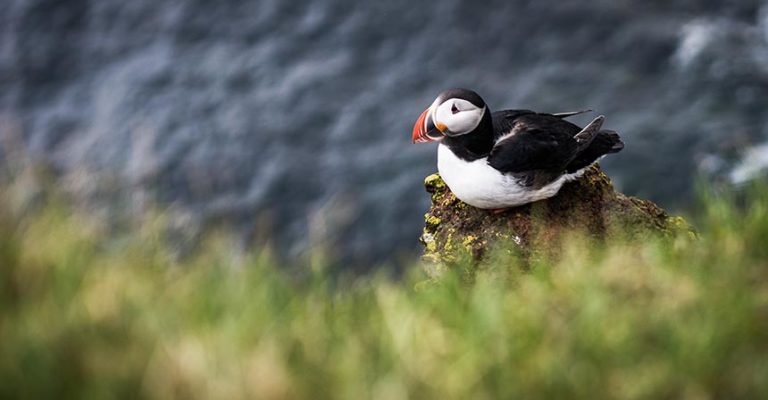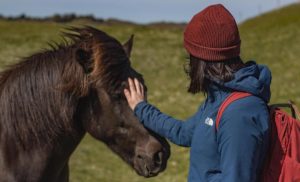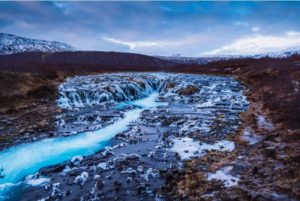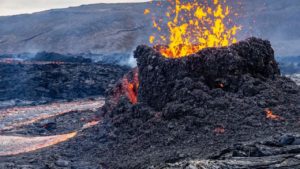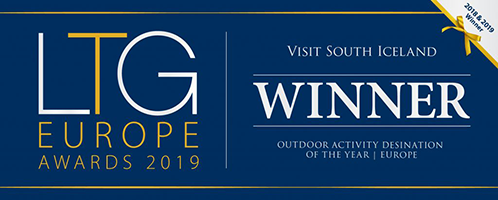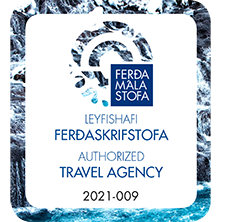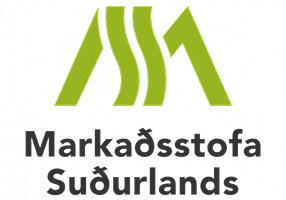Photo by: Arnaud Samie
Text by: Agata Ryszkowska
Wildlife in Iceland – An ultimate guide to whales, puffins and reindeers!
Some may think of Iceland as a land of not such a lively environment. Although there’s not many forests and there’s only a few permanently living mammals – Iceland is bursting in others forms of life. It’s paradise for bird lovers and heaven for fans of marine life. It’s definitely different from what you’re used to and that’s what makes it special!
The only native land mammal is the Arctic Fox, which walked to Iceland over frozen sea by the end of the ice age. Every other species that permanently live in Iceland have been brought by the settlers around the 9th century. The topic of domestic animals is already covered and it can be found in our blog section. Here we’re going to introduce you to the wild animals that live here permanently or stay at the island for some part of the year. If you’d like to dive deeper, there’s an Icelandic database covering a good chunk of its fauna.
Conditions in Iceland haven’t been easy on every living creature here, including humans. Multiple eruptions, moving glaciers, severe winters, barren soil and the lack of trees made it impossible to survive for many species. The isolation of Iceland doesn’t help either; the island is inaccessible for wildlife to naturally expand their territory. That may be a good news for most of us, as you’ll never meet here any amphibians or reptiles, although some bugs may annoy you on a nice summer evening while camping by a river. So let’s dive deeper into Icelandic nature!
POLAR BEARS AND PENGUINS…?
Before we actually dive deeper, we need to make some things clear. No, there’s no penguins living in Iceland. And the same applies to polar bears. On a very, very rare occasion a bear comes over on an ice-floe to land in the Westfjords or in the North. If you spot one, stay away as the arrive unbearably hungry and they won’t be fussy about what to eat. Unfortunately they’re killed once they enter Iceland due to high costs of returning them home.
LAND ANIMALS
ARCTIC FOX
As it was mentioned before, Arctic Fox is the only indigenous animal that still thrives in Iceland. It’s said that they used to be accompanied by walruses whose population unfortunately didn’t survive. There are many factors that may have been the cause of their extinction, like hunting after the settlement, climate change and/or volcanism. While walruses didn’t make it, the Arctic Fox actively adapted to the environment. They have high body fat, small triangular ears and nozzle, a short tail to minimize heat loss. They’ve also got fur on the bottom of their paws (free slippers, sign me up!), and the warmest, most efficient coat of any mammal in the world. The color of their fur changes as the seasons go by – from brownish and bluish colors they turn into white fluff balls barely noticeable in the deep snow.
Even though they’re omnivores, their diet consists on everything from eggs, shellfish, mice, dead seals, birds (they love ptarmigans) to… sheep. The latter one used to be a struggle for both the foxes and the humans, whose lives depended on their sheep herds. The foxes had to be hunted and their fur became extremely valuable in such harsh conditions.
Nowadays there’s only about 5.000 of them spread all around the country in the most remote places. You’re most likely to spot them around the Westfjords, especially the nature reserve called Hornstrandir and Skaftafell in the South-Eastern part of the country. If you happen to travel near Súðavík, it’s worth to take a detour to the Arctic Fox Centre, where you can learn more about them and have a peek at a couple of orphaned foxes in the backyard.
REINDEER
There’s something majestic about these animals and it makes you realize that you really, really are up in the North deep in the nature, in the cold climate. Reindeers have been brought from Norway to Iceland relatively late – around 18th century. They were supposed to be domesticated but due to various reasons they’ve been feral from the very beginning. At first it was possible to spot them from the West, through the North up to the East but their number was heavily fluctuating because of periodic lack of food, disease and obviously, harsh climate. Now there’s around 3.000 of them only in the Eastern part of the country. They spend most of their summer time near mount Snæfell but when the winter hits, they go down in search for food. It’s possible to spot them around the town Vopnafjörður and as far south as the Jökulsárlón Glacier Lagoon.
It’s the only cervid species in which both sexes have antlers. The males lose theirs in the winter time, while the females do the same in the spring time, when they give birth to a single calf. They can easily keep a stable body temperature up to -40°C. If you happen to drive across the East, you have a relatively high chance of witnessing their presence. However, there are reindeer tours available when the guides take you to the places they’re usually most seen.
AMERICAN MINK
Mink is considered as the most vicious, damaging species living in the borders of Iceland. They were brought to Iceland in 1931 for farming reasons but soon a good chunk of them escaped the cages to live as a fugitive. Mink covered almost the whole country, eating mostly duck eggs, birds, freshwater fish and bumblebees. It caused some bird species disappear from Iceland, for example Water rail or Black guillemot. Nowadays the government sponsors mink hunting in order to keep the population down and for each carcass you’re getting an attractive reward.
OTHER
There’s only four kind of rodents permanently living in Iceland. Two of them are a wood mouse and a house mouse and it’s said to be the first kind of mammal (most probably unintentionally) brought to the country. They live a comfortable life in the gardens, at the farms, houses and churches. The other two are brown rat and black rat and they were introduced here much later, probably around 20th century. They’re still considered to be a pest and the only areas free of them are the offshore islands. It’s also worth to mention rabbits that were once imported as domestic pets.
BIRDLIFE
Iceland is extremely rich in birdlife. There are uncountable places all around the island where birds can nest without the fear of human interference. About 72 species of bird nests in Iceland, however many more are considered as passing migrants. That makes nearly 300 species being constantly spotted within the borders of the island!
Lots of the birds are driven by their kind of nostalgia – they love to come back the the place they spent their childhood. The dramatic cliffs, the peaceful grounds of offshore islands and the endless amount of accessible food makes Iceland the perfect home for the winged creatures, although the majority of them Iceland is just a pit stop. Let’s talk about the most special ones that make Icelandic wildlife unique.
PUFFIN
It’s not possible to write about birds in Iceland without mentioning the most popular and adorable of them all. Puffins with their white tummy, triangle shaped eyes and parrot-like bright orange beaks are the most iconic bird in Iceland which you can watch for hours and never get bored. They’re adorable on the ground because of they clumsiness. They waddle when walking but when it comes taking a dive, they’re absolute professionals. It’s no problem for them to stay underwater for a minute and to stay 15 meters under the surface. They arrival to Iceland in-between April and May is an indication that the summer has started and they stay here until August. They’re not up to live a loner life so if you spot one, there’s a high chance that there are hundreds more somewhere on the close-by cliff!
What adds to their cuteness is the fact that the stay in lifelong pair. The first three years of their life are spent exclusively at the sea which is followed by a journey back to the very cliff where they were born. After five years of his life a male usually finishes digging a burrow in the cliff, which will be home for each child he and his partner will have during they lifetime. They’re not that afraid of humans so they let you come quite close!
Since they stay here only during the summer months, it’s best to spot them early in in the morning and late in the night, when they come back tired after a whole day of hunting. There are a few places where you can quite surely meet them if the timing’s right, for example: Westman Islands, Látrabjarg cliffs, Dyrhólaey rock arch or near Reynisfjara, Grímsey Island or Puffin Marina in Borgarfjörður Eystri. But don’t be shy because you’re more than welcome to take a tour and hop on a boat to get even closer to them and see them from a completely different perspective. It’s possible to do it even from Reykjavik if you happen to only be here for a stopover!
OYSTERCATCHER
It’s difficult to miss this bird not only because of his loud, characteristic call but also for its unique appearance. It belongs to the family of waders who live close to the coastline. With the long, thin pinkish legs and a needle-like orange beak it’s no problem for them to find mollusk, worms and insects. They’re one of the very few waders that actually feed their young. They’re black and white colored and can be found mostly in the Breiðafjörður area. They fly to Spain for the wintertime but there’s always a few of them that decide not to leave Iceland and try to survive the severe weather. Crazies!
ARCTIC TERN
A inconspicuous bird with not such a characteristic appearance that will make you cry if you’re not cautious enough. These white birds with black heads won’t hesitate abruptly diving to peck your head if you get too close to their nests. They’re extremely protective due to their lack of skills to build proper nests – they usually lay the eggs on open gravel fields. The dive bombing is usually followed by an alarming sound. It’s best to keep something above your head like a stick to trick them as they usually aim for the highest point. They also happen to migrate the longest distances usually reaching up to 32.000km. Icelanders adore them and you can find them on stamps or signs of restaurants and guesthouses. The arctic terns are like Iceland – they’re small but if bothered, they’re not afraid to get their own way.
GOLDEN PLOVER
Golden plover has the honor of delivering one of the happiest messages in Iceland. They usually come to Iceland between 20th and 30th of March and they always make it to the front page of the newspapers. Once it’s spotted on the island, it means the spring has sprung! There’s even a poem written by Páll Ólafsson titled The golden plover has arrived to sing away the snow, which became a well-known song hummed to celebrate the end of the long, dark winters. It’s an adorable bird with big, black eyes and spotty golden feathers. They can be identified by a single chirp and they’re usually found all around Iceland’s freshwater, such as Lake Þingvallavatn and Lake Mývatn.
GYRFALCON
The first bird that comes to mind when someone mentions Iceland is surely puffin but it’s the gyrfalcon that happened to be the national bird. It’s the largest of falcons with the wingspan of 1.2 meters, it feeds mainly on ptarmigans but won’t refuse other smaller birds. With its white and black feathers it’s definitely a majestic species. There’s only about 400 breeding pairs of them and they’re highly protected. They nest in cliff faces, so it’s most possible to find them in Highlands, East Fjords, Westfjords, and mountainous parts of the North.
EIDER
Eider ducks quite unintentionally are the reason of a very lucrative business. Like most ducks, they pluck their down to insulate the nests. The down happens to be extremely light, warm and soft. It’s picked from their nests without bothering them and making their life hard but it can be only picked by landowners if the nest is located on their property. The maximum weight of down you can get from one nest is about 30g. The down is usually used for filling up duvets or pillows, which can be easily sold for around 10.000$. Iceland still remains to be the number one eider down exporter in the world.
COMMON SNIPE
You cannot mistake the common snipe sound to any other bird’s. If you’ve been to Icelandic countryside during summer, there’s a very high chance you’ve heard the special sound it makes! The snipe is immediately recognizable because of its long, sharp beak but you won’t manage to get too close as it’s rather on the shy side. The distinctive sound is actually the cause of his tail during courtship. The male flies up high and then dives abruptly, which produces a kind of a drumming sound as its tail vibrates against the air flow. It’s definitely identified as a sign of summer. You can meet them near coastlines and wetlands where it feeds on worms and insects.
MARINE LIFE
The sub-Arctic waters fueled by the Gulf Stream are extremely rich in marine life. Over 2,500 species have been found around Icelandic economic zone but no doubt there’s more. From various species of fish, through whales to seals – it’s always worth to keep your eyes wide open while taking a drive by a shoreline. Iceland’s not only famous for its whale watching tours – it also offers something to eat, like hákarl (fermented shark meat), plokkfiskur (mashed fish with potatoes and lots of butter), harðfiskur (dried fish, most commonly cod) or whale meat, which we highly discourage. Let’s find more about these gentle giants and more!
WHALES
Whales arrive to the Icelandic waters in May and stay here up to October. Sources say that over 20 whale and dolphin species have been noticed around Iceland, although half of them is seen regularly. If you’re traveling during summer time, be open-eyed during mornings and evenings! They’re mostly seen in the fjords or near islands close to birds feeding on fish. You may not be that lucky to spot one yourself so booking a whale tour is a wonderful idea. The capital city of whale watching is Húsavík located in the North, the town you might have heard of thanks to the movie titled „Eurovision Song Contest: The Story of Fire Saga”. Even if the fertile waters of Húsavík are probably the best choice to spot some whales, you can also do the same in Reykjavik! There are countless tours all over Iceland and it’s worth to choose the ones that are more eco-friendly, for example the ones that offer electric boats.
Toothed whales in Iceland:
– White-beaked dolphin
– White-sided dolphin
– Harbor porpoise
– Longfin pilot whale
– Northern bottlenose whale
– Orca (killer whale)
– Sperm whale
Baleen whales in Iceland:
– Minke whale
– Baleen whale
– Humpback whale
– Blue whale
– Fin whale
– Sei whale
SEALS
Seals tend to be a little shy but you’ll be able to meet these adorable, chubby animals if you know where to look. The two most common species met in Iceland are Harbor seal and Grey seal. The Harbor seal weighs about 100kg and is 1.5m long, and they can be spotted mostly around the West and North. There’s about 10.000 of them in Iceland and their matin season takes place in spring. The capital if seal watching is Hvammstangi so make sure to put a pin in this town! If you’re lucky enough, you’ll spot some too around the Reykjavik harbor as well. Some of the most famous places to see them is the Jökulsárlón glacier lagoon, Ytri Tunga beach on Snæfellsnes and Hvítanes in Skötufjörður Fjord.
The Grey seal is far more difficult to be observed, although they’re twice as big as the Harbor seals. They’re about 6.000 of them living around Icelandic coastline and they’re most frequently seen around unpopulated islands. They mate during autumn and a feeding seal burns up to 29.000kcal a day!
FISH
Iceland being surrounded by fertile waters and being crisscrossed by rivers is extremely rich in multiple kinds of fish. It’s said that there’s about 340 species regularly seen around the island. The Northern waters of Iceland belong to two ecological zones: the subarctic and the Arctic one. Thus, species from both of these zones occur there making up to 70 species in total.
The most popular saltwater fish in Iceland are: catfish, Atlantic cod, haddock, mackerel, halibut, and pollock, whereas the cod is the heart and soul of Icelandic kitchen. Skate and Greenland shark are also see around the island although they don’t cause a threat to humans.
When it comes to freshwater fish, the most common ones are: brown trout, Atlantic salmon and Arctic char. Fish has been a mainstay in Icelandic cuisine for as long as people have lived there and it continues to be so, although the awareness towards seafood contamination and health consequences slowly starts to grow.

